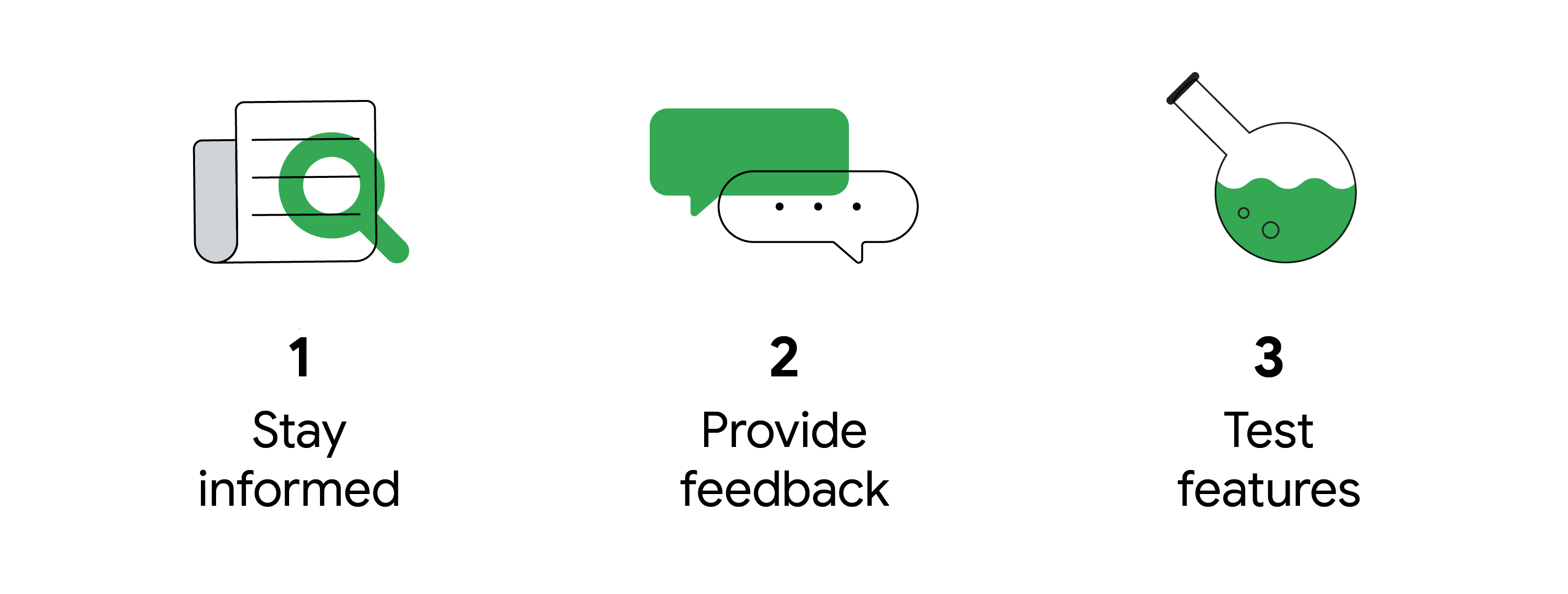It’s not news that people are increasingly concerned about their privacy online; at Google we see this very clearly. In 2019, over 19 million users per day visited their Google Account, where users can choose and adjust their privacy settings across all their Google products.1

People’s growing concern for digital privacy has led to both increased regulation and changes by web browsers to limit the collection and use of data. These changes create important considerations for publishers and their advertiser clients as they look to position themselves for success in the future.
Google is committed to helping publishers navigate today’s privacy environment, and what lies ahead. Our mission is to raise the bar for user privacy while also ensuring an open, ad-supported web. We’ve put together the following recommendations to help publishers get started now.
Plan for and address evolving global privacy regulations
Around the world, government policymakers are developing regulations that support users’ rights to control how sites and apps use their data. Beyond Europe’s General Data Protection Regulation (GDPR) and the California Consumer Privacy Act (CCPA), similar regulations already in place in Japan, South Korea, Singapore, and Australia, are expected to take effect in the coming months in Brazil and Thailand, and are currently being considered in India, as well as dozens of U.S. states. Here’s what we recommend publishers do now so they can be prepared as new regulations go live in the coming months and years:
- Work with your legal team
Ensure your privacy practices meet the requirements of the current laws, and better understand how future regulations may impact your business objectives around the world. - Create a clear and easily updated privacy policy
Clearly explain the value exchange — what the user is getting in return for their data, how you protect and use their data, and how they can control their data. - Implement a consent management platform (CMP) where appropriate
Ensure your users have transparency into and control over how their data is used. Using a CMP makes it easier for publishers and developers to gather and manage consent from their website and app visitors so they can deliver personalized ads, provide a better user experience, and grow revenue. - Confirm your partners share your privacy values
Audit advertising and technology partners to ensure they also have privacy-forward principles and practices that comply with regulations, are consistent with user expectations, and protect your users’ data.
Google has compiled information and developed tools to help publisher partners adhere to data protection laws and will continue to develop guidance and solutions as new global regulations come online.
Understand web browser privacy and how publishers can get involved
Creating new web standards is an opportunity for the entire web community to rethink and improve the way the web and digital advertising works for users. The Privacy Sandbox open standards initiative, spearheaded by Chrome, proposes new technologies to preserve critical advertising use cases, including measurement, ad selection, fraud detection, and more, while enhancing user privacy across the web.
Beyond Google, several other parties are offering their own ideas for privacy-preserving solutions for the web. Chrome is participating in open forums within the World Wide Web Consortium (W3C) to discuss proposals within The Privacy Sandbox initiative, as well as proposals submitted by other parties. This is how wide-ranging ideas will be surfaced for new web standards and how the most complete solutions will be developed.
Google encourages the entire web community, including publishers, to give feedback and join the discussion. Here’s what publishers can do to learn more and get involved:
How to get involved

- Stay informed
Follow the Chromium blog for significant news and announcements. To keep track of individual proposals as they are published, monitor The Privacy Sandbox page on Chromium.org. A broader list of proposals, maintained by members of the W3C Improving Web Advertising Business Group, can be found on its GitHub page. Assess these proposals against your use cases and priorities, and inquire with industry associations to understand their engagement plans. - Provide feedback on current proposals or propose new solutions
You can raise questions and share feedback by commenting on individual proposals in GitHub, linked from The Privacy Sandbox. If you want to discuss a range of privacy topics and use cases with browser representatives, industry stakeholders, and others in the web community, consider joining a W3C Community or Business Group, such as the Improving Web Advertising Business Group or the Privacy Community Group. - Test features
If you have developer resources and an appetite for early experimentation, you can monitor for “Intent to Experiment” announcements on the public blink-dev list. This is the first signal to the developer community that Chrome intends to test a prototype feature or capability. Or monitor the Chromium blog for launch announcements so you can be an early adopter of newly launched features.
Build stronger relationships with your users with first-party data
With third-party cookies facing new restrictions across the ads ecosystem, first-party data is now even more crucial to success for publishers and their advertiser clients.
First-party data is now even more crucial to success for publishers and their advertiser clients.
From content development to predictive analytics to addressable advertising, leading publishers today are using their user data to inform all aspects of their businesses. Now is the time to start or increase investments in your data capabilities. Getting your first-party data strategies implemented and producing results will require cross-functional executive involvement and oversight. It will also require a strong understanding of how to deliver value for your users. Here’s how we recommend you get started:
- Define your data activation goals
Setting goals for how you intend to activate your data early in the process is an important step in your strategy. Once you have these outcomes defined, you’ll be able to back out the steps needed to accomplish them. We recommend starting with monetization goals that help your advertisers reach their desired audiences and other objectives, like growing your engagement, subscriptions, and more. - Give people a reason to share
Create a reason for users to tell you about themselves by offering them better experiences and new ways to engage with your content. Explore offers and products, like subscriptions, trials, memberships, loyalty programs, newsletters, and more to increase engagement and add value. - Put the right people in place
Data enablement requires unique skill sets, including some highly technical skills. Work to identify, recruit, and grow the internal skills you need to accomplish your goals. - Find the tools and technology you need
Implementing the right technology to capture, analyze, and activate data that supports your business objectives is fundamental to the success of your strategy. Working with privacy-forward partners on this could be beneficial to address gaps in your knowledge of the ecosystem. - Categorize and govern your data
Creating structure around your data will help you develop richer insights and maximize the impact of data-informed business strategies. Additionally, incorporating the right governance practices ensures your data is well-maintained, responsibly handled, and compliant.
Use the Google Data Maturity Benchmark to discover how your use of data measures up against other organizations and how to engage and monetize your audiences more effectively.
Without a doubt, privacy has become one of the foremost priorities of the advertising industry. Although much of what we know and do will evolve, we believe that getting your organization invested and aligned early is critical to establishing best practices and producing long-term success.
In the coming months, we’ll be sharing additional resources to help you continue on your privacy journey.







